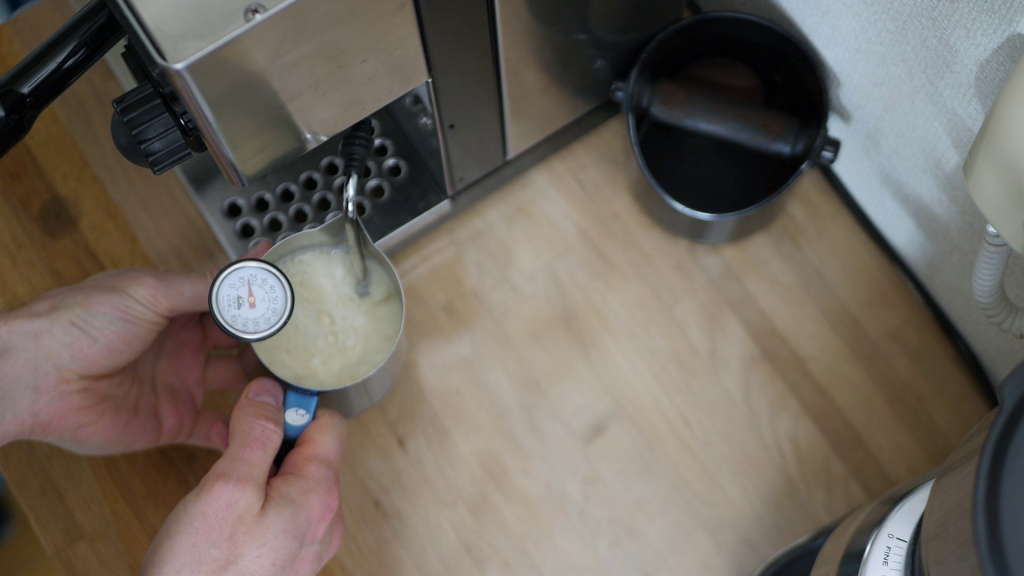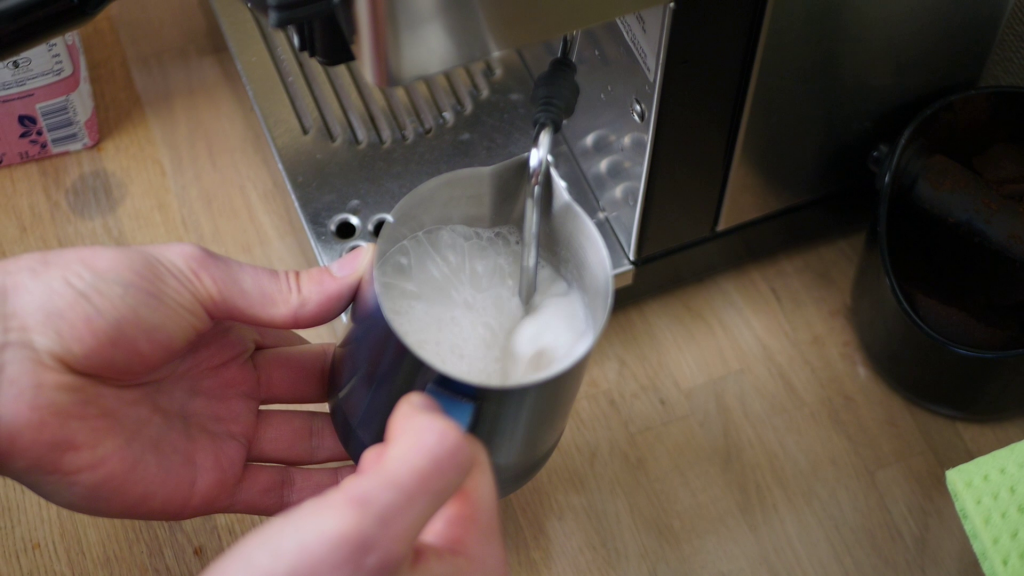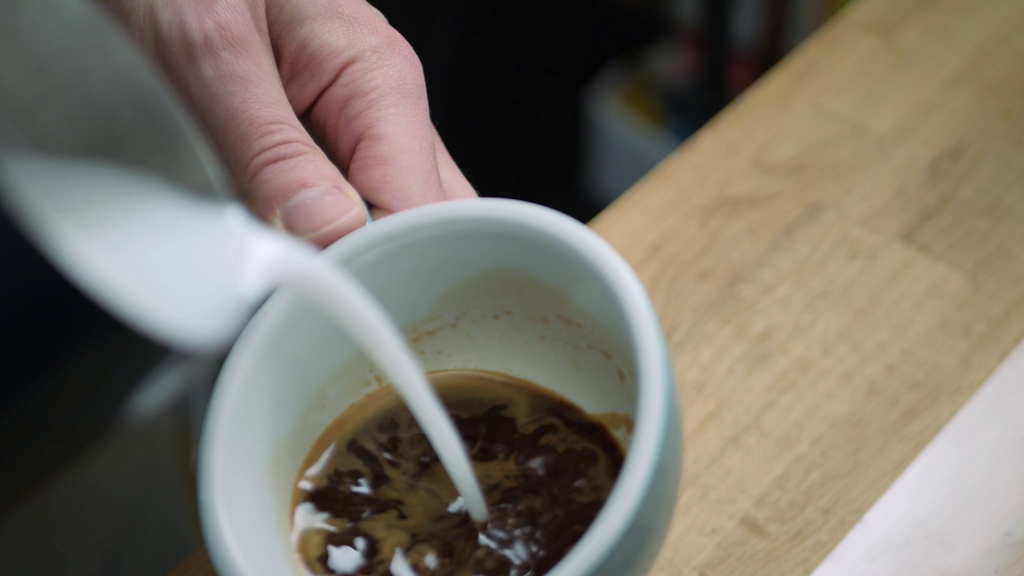You’re ditching cows milk for whatever reason, and you’re looking for the tastiest alternative for your morning latte. Whatever your favourite is, there’s no denying that steaming most milk alternatives is different, so how do you get that creamy texture, or even maybe pour some latte art, without using cows milk?
Video version of this blog post on Home Cafe by Charlie:
I’ll reference a few techniques from my milk steaming guide, so if you haven’t seen that yet you can check it out here. As with cows milk it is super important to get a vortex going, as milk alternatives generally don’t incorporate air as well as cows milk. So let’s line them up!
Soy Milk
I’m not generally a big fan of soymilk with coffee, but I know it’s super popular with many people who are going lactose free. When I’ve had friends over in the past I’ve bought soymilk knowing that they would prefer it in their lattes, and I used to really struggle to steam it properly until I learned these little tricks that helped me do a good job even when I rarely use soymilk myself.
First thing is before you even pour the soymilk into your jug, you need to use darker roasted coffee beans with lower acidity. Soy milk has a lot of protein and these strands can react poorly to highly acidic coffees, so save your light roasted Ethiopian beans for another day and use a darker roast to prevent the soymilk from separating once it hits the espresso. There’s nothing more gross than to see your latte art clump up and start to look like a Monet painting, and it all starts with the beans before you even steam the soymilk.
Next you want to reduce the overall temperature you heat soymilk to. It can’t handle as high a heat as cow’s milk so if you are measuring heat with a thermometer, try to finish up at around 55°C, or else you’ll end up with curdled soymilk, which is super gross and basically undrinkable. Yes it won’t be as hot a drink, but that’s better than coffee soy pudding.

You also will need to reduce the amount of air you put in to soymilk. It will get foamy much more quickly than cows milk which has more fat content, so cut the air after a shorter burst (like so). Take the soymilk straight from the fridge as it will take on air much better when it is cold, and inject the air at the very beginning of steaming quickly so you can get your roll going and incorporate that milk better.
The brand of soymilk for coffee is definitely important, and while it does certainly come down to preference, I’ve noticed that most of the speciality coffee spots I go to here in Tokyo use Bonsoy, as they have the best profile for steaming. Like I said I rarely drink soymilk, so if you have a favourite brand that works well for coffee please tell me in the comments.
Almond Milk
Next up we have almond milk, which used to be one of my favourite alternative milks for making lattes. The flavour is really mild and pleasant, so it doesn’t ruin the flavour of the espresso and can allow more subtle flavours to come through. There are a lot of different brands and it is generally available everywhere for a price that isn’t much more expensive than cows milk.
Most almond milks aren’t as easy to steam as cows milk. If you can find them, barista blends are much better for steaming as they use different stabilizers and will hold a latte art design for longer without turning into a bubbling mess.
Almond milk can also handle a higher heat than soy, so in terms of temperature you can treat it the same as normal milk. The biggest issue I’ve found is that most brands of almond milk find it easier to pull in a lot of air and get those big bubbles, so I generally reduce the amount of air I inject at the start of steaming. Make sure to inject the air slowly or it will pull in this big bubbles. It is much easier to do flat white or latte foam than cappuccino, so I wouldn’t expect to make good cappuccino foam with almond milk. It just doesn’t hold together and separates quickly into a weird thin foam like a bubble bath that doesn’t have a pleasant texture.

Oat Milk
Next up is another delicious milk alternative, oat milk! Oat milk is naturally a little sweeter than soy or almond milk, but it still has a mild flavour so you can still taste the flavours of the coffee. Oats are naturally very starchy and there is nothing worse than getting a porridge latte, so unless you are willing to experiment I highly recommend going with barista blend oat milks wherever possible.
I really only made my own because it was so hard to find oatmilk here in Tokyo even a few years ago, but now I’ve found it in local stores so I don’t bother making it most of the time any more.
Unlike soy milk, oat milk doesn’t have much in the way of protein, so there’s a lower risk of curdling when using more acidic coffee beans, but this can also make it take on much bigger bubbles, making it harder to do latte art. It can be challenging to get the right texture, so reduce the amount of air you might add in and be careful of early bursts that might pull a lot of air in early on, as it will be hard to incorporate that air later on.

I think oat milk has become my favourite milk alternative, because the flavour is so good. If it weren’t so expensive in Japan, I would be happy to switch off cows milk to oat milk. It’s that good!
Other Non-Dairy Milks for Coffee
Rice Milk
In my experience, while I do really enjoy an ice cold glass of rice milk, it is too sweet for a latte and completely overpowers the flavour of the coffee. It is also a bit too watery and I’ve not been able to get good texture, and certainly not any decent latte art. I have this hazelnut milk which tastes amazing, but I discovered later that it’s also rice milk with hazelnut paste, so it was awful to steam.
Hemp milk
No, just no. The texture is awful for steaming and it generally creates a muddy flavour when combined with coffee, so I’d avoid that at all costs. I’m open to being wrong on that, and it might just be personal taste, but the time I tried hemp milk with espresso was bad enough that I didn’t want to finish the drink.
Cashew Nut Milk
I have tried cashew milk and found it to have such a distinctive flavour that I would prefer other kinds of milk that don’t overpower the flavour of the coffee. It also doesn’t steam well and the first time I tried it, it completely came apart when it hit the espresso. If a company makes a good cashew nut milk for baristas with stablisers that stop it from coming apart, I’d be interested to try it, but for now I prefer almond milk in every way.
Coconut Milk
I’m not the biggest fan of coconut milk in the first place, and for the video on my channel I tried steaming it for a latte – the flavour is a little dull and I feel like when combined with espresso it makes a pretty plain tasting drink, even though it does have a creamy texture. If you love coconut everything then you might want to try this one. The texture is smooth, but really it all has to come down to flavour and for me coconut milk is just not as good as the others I talked about.



![Make A Perfect Cafe Mocha [3 Ways]](https://homecafebycharlie.com/wp-content/uploads/2021/08/P1220321-400x250.jpg)